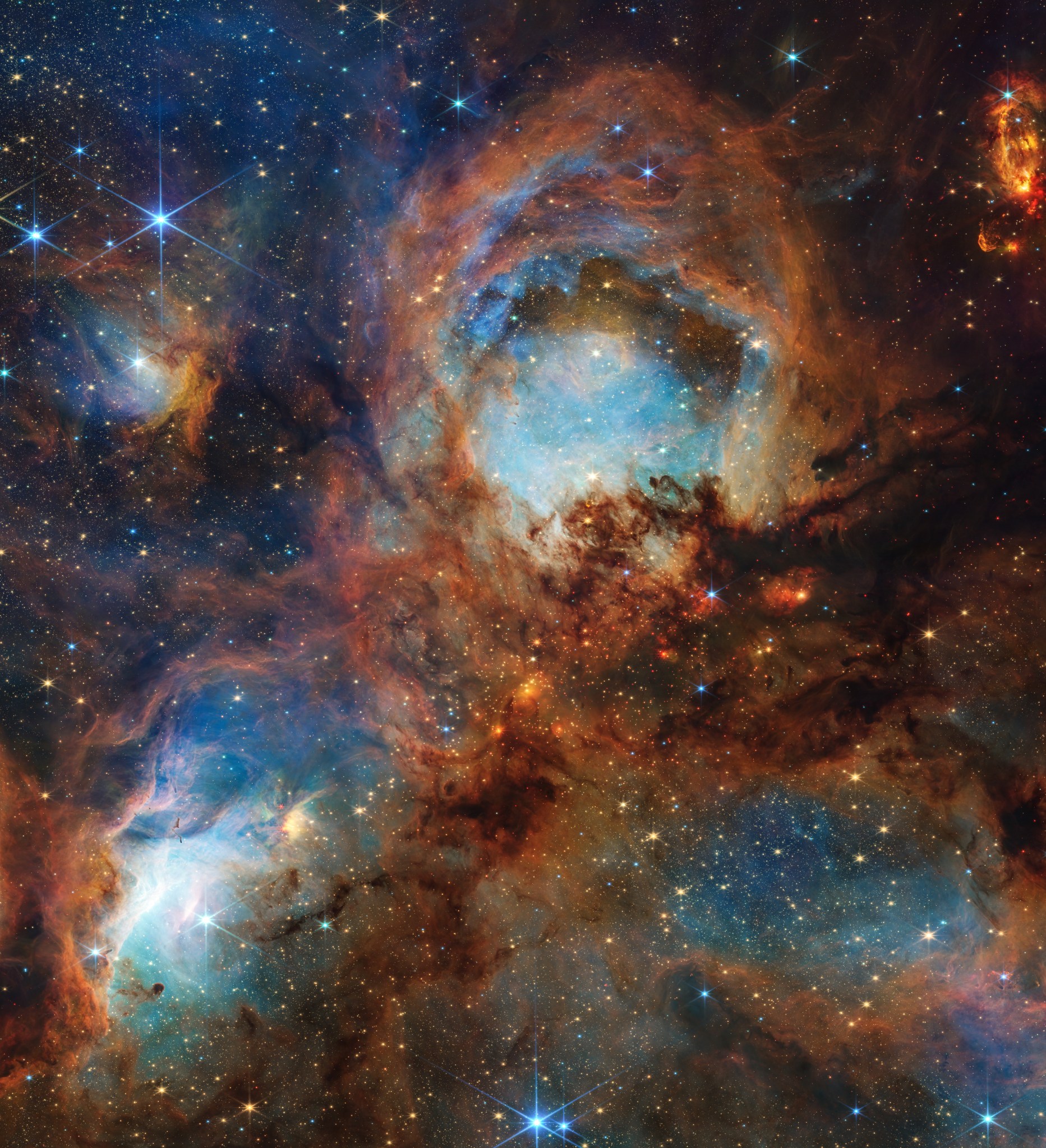NASA’s James Webb Space Telescope team released this image of the Cat’s Paw Nebula on July 10, 2025, in honor of the telescope’s third anniversary. Webb’s NIRCam (Near-Infrared Camera) revealed never-before-seen structural details and features: Massive young stars carve away at nearby gas and dust, while their bright starlight produces a bright nebulous glow represented in blue. As a consequence of these massive stars’ lively behavior, the local star formation process will eventually come to a stop.
Take a tour through this section of the Cat’s Paw Nebula.
Image credit: NASA, ESA, CSA, STScI
